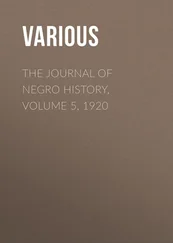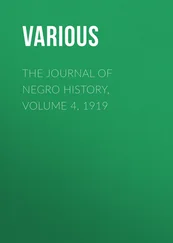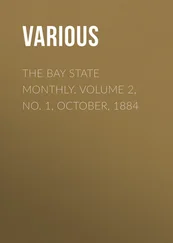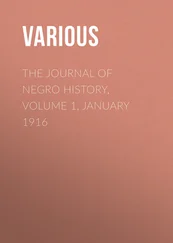Various - The Bay State Monthly, Volume 3, No. 4
Здесь есть возможность читать онлайн «Various - The Bay State Monthly, Volume 3, No. 4» — ознакомительный отрывок электронной книги совершенно бесплатно, а после прочтения отрывка купить полную версию. В некоторых случаях можно слушать аудио, скачать через торрент в формате fb2 и присутствует краткое содержание. Жанр: foreign_antique, periodic, foreign_edu, на английском языке. Описание произведения, (предисловие) а так же отзывы посетителей доступны на портале библиотеки ЛибКат.
- Название:The Bay State Monthly, Volume 3, No. 4
- Автор:
- Жанр:
- Год:неизвестен
- ISBN:нет данных
- Рейтинг книги:5 / 5. Голосов: 1
-
Избранное:Добавить в избранное
- Отзывы:
-
Ваша оценка:
- 100
- 1
- 2
- 3
- 4
- 5
The Bay State Monthly, Volume 3, No. 4: краткое содержание, описание и аннотация
Предлагаем к чтению аннотацию, описание, краткое содержание или предисловие (зависит от того, что написал сам автор книги «The Bay State Monthly, Volume 3, No. 4»). Если вы не нашли необходимую информацию о книге — напишите в комментариях, мы постараемся отыскать её.
The Bay State Monthly, Volume 3, No. 4 — читать онлайн ознакомительный отрывок
Ниже представлен текст книги, разбитый по страницам. Система сохранения места последней прочитанной страницы, позволяет с удобством читать онлайн бесплатно книгу «The Bay State Monthly, Volume 3, No. 4», без необходимости каждый раз заново искать на чём Вы остановились. Поставьте закладку, и сможете в любой момент перейти на страницу, на которой закончили чтение.
Интервал:
Закладка:
After the skirmish at Merriam's corner, the fighting was continued in true Indian fashion from behind walls and buildings with such effect that the British would have been captured had they not been re-enforced at Lexington by a large force with field pieces.
In 1836, the spot on which the British stood was marked by a plain monument, and in 1875 the place near which Captain Isaac Davis and his companions fell was made forever memorable by the noble bronze statue of the Minute-man by Daniel Chester French in which the artist has carefully copied every detail of dress and implement, from the ancient firelock, to the old plough on which he leans.
In order to prove her claim to the peaceful name of Concord, this village seems to have taken an active part in every warlike enterprise which followed. Several of her men fought at Bunker Hill and one was killed there. In Shay's Rebellion Job Shattuck of Groton attempted to prevent the court, which assembled in Concord, from transacting its business, by an armed force. In the war of 1812, Concord men served well, and in the old anti-slavery days many a fierce battle of tongue and pen was waged by the early supporters of the then unpopular cause. John Brown spent his fifty-eighth birthday in the town the week before he left for Harper's Ferry, and the gallows from which his "soul went marching on." The United States officials who came to arrest Mr. Sanborn for his knowledge of Brown's movements were advised by the women and men of Concord to retreat down the old Boston road a la British; and when the call came for troops to put down the late Rebellion, Concord was among the first to send her militia to the field under the gallant young farmer-soldier, Colonel Prescott, who at Petersburg,
"Showed how a soldier ought to fight,
And a Christian ought to die."
In memory of the brave who found in Concord "a birthplace, home or grave" the plain shaft in the public square was erected on the spot where the Minute-men were probably first drawn up on the morning of the nineteenth of April. 1775 to listen to the inspiring words of their young preacher, Rev. William Emerson, and ninety years after in the same place his grandson R.W. Emerson recounted the noble deeds of the men who had gallantly proved themselves worthy to bear the names made famous by their ancestors at Concord fight. The Rev. William Emerson in 1775 occupied and owned The Old Manse , which was built for him about ten years before, on the occasion of his marriage to Miss. Phoebe Bliss, the daughter of one of the early ministers of Concord. Mr. Emerson was so patriotic and eager to attack the invaders at once, that he was compelled by his people to remain in his house, from which he is said to have watched the battle at the bridge from a window commanding the field. He soon after joined the army as chaplain and died the next year at Rutland, and his widow married some years after the Rev. Dr. Ripley who succeeded him in his church and home, and lived until his death in the Manse which has always remained in the possession of his descendants. Dr. Ripley ruled the church and town with the iron sway of an old-fashioned New England minister, and the old Manse has for years been a literary centre. In the old dining room, the solemn conclave of clergymen have cracked many a hard doctrine and many a merry jest, seated in the high-backed leather chairs which have stood for one hundred and twenty years around the old table. Here Mrs. Sarah Ripley fitted many a noted scholar for college in the intervals of her housekeeping labors before the open kitchen fireplace. In an attic room, called the Saint's chamber, from the penciled names of honored occupants, Emerson is said to have written Nature , and perhaps other works, as much of his time was spent in the Manse at various periods of his life. Here Hawthorne came on his wedding tour and lived for two happy years and wrote the Mosses from an Old Manse and other works. In his study over the dining-room, his name is written with a diamond on one of the little window panes, and with the same instrument his wife has recorded on the dining-room window annals of her daughter who was born in the house.
On the hill opposite, the solitary poplar, the last of a group set out by some school-girls eighty years ago, still stands. Each of its companions died about the time of the decease of its lady planter, and as the one who set out the present tree has lately died, the poplar suffered last year from a stroke of lightning which may cause it to follow soon.
Nearly opposite the Manse on the road toward the village is the well preserved house, formerly the home of Elisha Jones, which bears in the L the mark of a bullet fired into it on the day of Concord fight. On the same side of the way a little farther down is a house, a portion of which was built by Humphrey Barrett as early as 1640. As the route of the retreating British from the bridge is followed for half a mile down this road the common is reached, which is bounded on the Northern end by the stores, from which the British took flour and other Continental supplies, and at the opposite end stands Wright tavern which the gallant Pitcairn immortalized by stirring his brandy with a bloody finger, unconscious that the rebel blood he promised to stir would cause his own to flow at Bunker Hill.
Opposite Wright tavern is one of the oldest burying hills in the country, on which may be seen the stone of Joseph Merriam, who died in 1677 and those of Colonel Barrett who commanded the troops, and of Major Buttrick who led them at the bridge, and of his son the fifer who furnished the music to which they marched. Here also is the inscription to John Jack famous for its alliteration, and the tablets of the old ministers and founders of church and State. Some of these headstones bear coats of arms and rough portraits in stone, while others more symbolic, are content with the winged cherubim or solemn weeping willow, and others older still preserve the antique coffin shape. About one quarter of a mile in the rear of this historic Burying Hill is Sleepy Hollow, the cemetery now so famous, which will be for centuries as now, the Mecca of pious pilgrims, for here Emerson sleeps beneath the giant pine of which he loved to write and which in grateful recognition ever whispers its solemn dirge over the dead poet, who will live forever in his writings. His grave is now marked by a rough rock of beautiful pink crystal-quartz, and his son Waldo lies close beside him, with no monument but the imperishable one of Threnody . Mrs. Ruth Emerson, the mother of the poet and his brothers, nephews and grandchildren rest near him, and close by is the grave of Miss Mary Moody Emerson, the eccentric genius whom he well appreciated.
Ridge Path leads up the steep hill past the grave of Emerson and also to most of the noted burial places. On ascending this path at the western end, Hawthorne's lot is first reached, surrounded by a low hedge of Arbor Vitae and the grave of the great writer is marked only by two low white stones one of which bears his name. At his head lies his little grandson, Francis Lathrop, and by his side Julian's little daughter Gladys. Behind is the grave of Thoreau, a plain brown stone, and very near are the graves of two of the little women, Amy and Beth, by the side of their noble mother, Mrs. Alcott. Colonel Prescott and many noted citizens are buried on this path which has for a chief ornament the handsome monument of the Honorable William Whiting, nearly opposite which is the Manse lot, with its memorials to Mrs. Ripley and her sons. On the side of this hill is the Monument to Honorable Samuel Hoar which bears upon its upper portion an appropriate motto from Pilgrim's Progress, and an oft-quoted inscription which with the one in the same lot to his daughter, is recommended to all lovers of pure English as they are true records of the pure souls they commemorate.
Читать дальшеИнтервал:
Закладка:
Похожие книги на «The Bay State Monthly, Volume 3, No. 4»
Представляем Вашему вниманию похожие книги на «The Bay State Monthly, Volume 3, No. 4» списком для выбора. Мы отобрали схожую по названию и смыслу литературу в надежде предоставить читателям больше вариантов отыскать новые, интересные, ещё непрочитанные произведения.
Обсуждение, отзывы о книге «The Bay State Monthly, Volume 3, No. 4» и просто собственные мнения читателей. Оставьте ваши комментарии, напишите, что Вы думаете о произведении, его смысле или главных героях. Укажите что конкретно понравилось, а что нет, и почему Вы так считаете.












